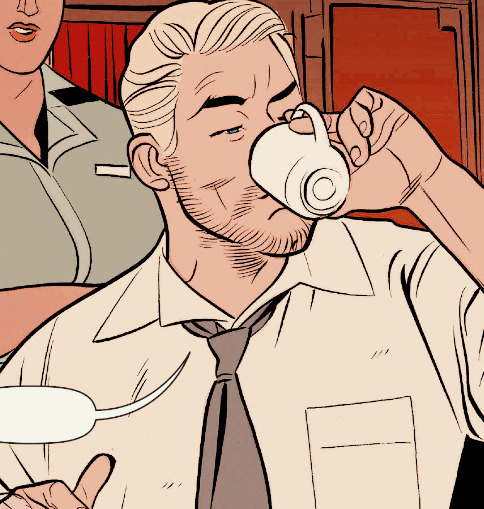#jupiter's legacy icons
Text
blog softblocking complete💙
#❛ ♡ › jupiter : 𝐨𝐨𝐜.#if you see this we're most likely mutuals unless you've been inactive for about 6 months????#it feels good feels organic.#thank you all for being so patient with me!!! ive missed writing on this blog and it's now my turn to begin to give back to all those ppl#who have showed interest ... expect me in those inboxes / calls / etc SOON#i was going for a blue theme ( hence my new header ... and little post below it but idk i like the mond.o icon legacy )
4 notes
·
View notes
Note
Hi! I've been reading a lot of your thoughts on superheroes, and wanted to ask you a question if that's okay.
I've always been interested in the genre, but lately I've gotten frustrated with how "safe" the entries play it. No matter what, there's always a Justice League, a world built on superscience, and most "importantly" of all, a Superman. I wanted to ask if all of these things a required for a superhero story, and if so, how far can they be stretched while remaining within the genre?
My conjecture is that from a bunch of directions, it’s a legibility issue.
Long swaths of rumination under the cut.
The superhero genre, out of all genres, is one of the most self-referential; it’s subject to an exaggerated, snowballing and self-reinforcing instance of the Mount Fuji Problem, as laid out by Terry Pratchett:
“J.R.R. Tolkien has become a sort of mountain, appearing in all subsequent fantasy in the way that Mt. Fuji appears so often in Japanese prints. Sometimes it’s big and up close. Sometimes it’s a shape on the horizon. Sometimes it’s not there at all, which means that the artist either has made a deliberate decision against the mountain, which is interesting in itself, or is in fact standing on Mt. Fuji.”
Superman is Mt. Fuji.
Superman is enormously popular. The first modern superhero, the one the rest of them are patterned on or in conversation with. In the early days, a lot of superheroes were just naked attempts to cash in on Superman, to the point of IP slapfights (This is how DC acquired the rights to Shazam/Captain Marvel.) In the interregnum period caused by the Wertham Scare, he was one of the only superheroes that survived and saw continuous publication. As a result of this bottleneck, superheroism is a genre monoculture; all characters conceived of as “superheroes” are only a couple of creative generations removed from Superman. All of this gives him- and characters patterned directly on him- an outsized influence in both the public and authorial perception of what a “superhero” looks like.
So fifty years down the line, when you’ve got creatives crawling out of the foxholes to try and make some superhero things that are new and innovative or parodic, a few things start happening:
Number 1. Superman is Very Legibly a Superhero. Superheroes, up until the MCU boom, were pretty niche in the mass market; a lot of pre-MCU films (and actually a lot of MCU films, this is my perennial beef) are structured in a way that makes it seem like they’re apologizing for daring to be superhero properties. Note the aversion to code names, the costuming choices made in the X-Men films, the irony poisoning. Superman was one of the exceptions to this, (Others being Batman and Spider-Man;) he’s too iconic. He’s one of a handful of characters who’s clearly a superhero and nothing else. (I’m going to return to this point later.) So if you wanted to invoke superhero at a glance in a mass-market property, making them have costumes and/or powers like Superman (sometimes with hints of Batman) was a fast way to communicate this. As the number of works that do this increase, the gravity of the bias swells because of the pool of precedent- the likelihood that your audience has seen not just Superman, but numerous parodies of Superman. (I was friends with a woman once who knew almost nothing about Superman beyond the fact he existed, but upon being told the broad strokes of his backstory, said, “oh, like in Megamind!”)
Number 2. Superman attracts the interest of Creatives and Iconoclasts. This is the non-cynical take on the above; Superman’s outsized presence in popular culture means that inevitably, a lot of really competent writers are exposed to him, grow up with him as one of their blorbos, and rotate him in their head non-stop for years until they’re finally in a position to write something. The Superman pastiches in Astro City and Irredeemable and Supreme Power and Invincible and Jupiter’s Legacy and The Authority and BNHA and Powers and on and on and on- they’re in there because the writers wanted to tell a story about superheroes, sure, but more specifically they want to yell their hot takes about Superman, who they love, out to the world. And many of these stories are thoughtful and reflective of the human condition or whatever, and so the canon of “Oh my god you have to read this” superhero works, inevitably start to contain tons and tons of Supermen pastiches. (And Batman pastiches; he’s subject to a similar dynamic.) The effect is reinforced.
Number 3. Even in niche or fan-oriented superhero works that don’t suffer from the above-described marketing pressures, familiar character archetypes are useful shorthand that lets you get to whatever novel point you’re trying to make faster. This applies to Superman, who I’ve focused on up until this point, but this is also a good point to start talking about one of the other things you mentioned, the Justice League.
In Invincible, the Guardians Of The Globe, world’s premier superhero team, are 1-to-1 pastiches of the classic Justice League Lineup. I own the ultimate collection in which Kirkman explained that choice; beyond the fact that they were very powerful heroes, and that it was very very bad for the world that they were dead, the actual nature of the Guardians was immaterial to the story. All things being equal, it therefore made the most sense to him to just piggyback off pre-existing comic book fan affection and reverence for the JLA, because his editor was breathing down his neck to get the actual story moving after the six issues of relatively low-stakes adventure that Kirkman had insisted on in order to make the reveal hurt more.
Strong Female Protagonist is (was?) a webcomic about the world’s most powerful superheroine sliding into semi-retirement after neutralizing all the superheroic threats and realizing that her actual toolbox with which to enact lasting societal change is pretty limited. There are a lot of powersets you could give to the most powerful hero in your setting; a lot of aesthetics you could give her; actually, by making her a woman at all you’re already breaking the mold. But there’s utility in starting somewhere bog-standard so that everyone’s on the same page when you start doing the social commentary.
Black Summer is a story about John Horus, the most powerful hero in the world, deciding that the only way to stay consistent with his commitment to evenly applied justice is to execute George Bush for War Crimes, explain why he did so, present the evidence, and ride off into the sunset; his five surviving teammates are then left holding the bag as a pissed off military closes in. The most powerful hero in this case is pointedly designed to look more like Magneto than Superman, but the seven-person team dynamic is clearly meant to broadly invoke that of the Justice League; this gives the readers somewhere to start when picturing what the team dynamic looked like before it collapsed, and it makes the ways in which the group is really obviously not at all like the Justice League pop.
Superhero story which are about someone needing to replace the world’s greatest superhero? Often rely on this fan-legible shorthand. (BNHA, Dreadnought, a couple others.) Stories in which the most powerful hero died as part of the backstory and left an imperfect world for the survivors? Often rely on this fan-legible shorthand. (Welcome to Tranquility, Renegades, etc.) Stories about the kid of the world’s most powerful hero trying to live up to their expectations? Often make use of this fan-legible shorthand (Sky High, Hero, etc.)
Extend it to other individual superheroes. You want to critique the economic injustice implied by superheroism, or the ways in which it would physically and socially destroy you? It’s efficient to invoke Batman or Iron Man, quintessential billionaire powerless capes, and go from there. You want to examine the hellish existence of the working-class teen superhero? Efficient to invoke Spider-Man and go from there. You want to examine the uphill battle of the female superhero in a male-dominated field? Efficient to invoke Wonder Woman and then go from there.
When you can simultaneously save time and creative energy AND demonstrate to your audience that you know the genre canon, the shared referents, the in-jokes- why reinvent the wheel?
The effect is reinforced.
Number four. In works that are about a more unconventional or unique superhero, A tertiary Superman-figure can be a useful genre signifier.
So, the obvious rebuttal you could provide to everything I’ve said so far is that the superhero genre is obviously, comically, massively more diverse than just Superman and copies of Superman. You can make a superhero based on almost anything, intersecting with almost any genre. This is, in fact, the key to the genre’s longevity; the degree to which “Superhero” is such a nebulous genre category that you can cram basically anything into it and have it work. You can remix it forever.
However, this is a double-edged sword; while a superhero universe can accommodate literally anything, many of the resultant “superheroes” are superheroes purely because they exist in the context of a superhero universe; they stop existing as such if removed from it. Blade is a superhero, but the Wesley Snipes Blade films are not really framed as superhero films. Doctor Strange, extracted from the rest of Marvel, could just be an Urban Fantasy property. Green Lantern and Nova and Captain Marvel could be yoinked out and reframed as participants in the Space Cop flavor of Space Opera. Context-scrubbed Thor could be high fantasy. Context-scrubbed Hulk could be a monster movie. Context-scrubbed Guardians of the Galaxy becomes Space Opera. Ant-Man wasn’t originally a superhero; Hank Pym debuted in a one-shot horror/adventure comic about a scientist who nearly gets killed fucking around with a shrinking formula and an anthill, and then he got retooled when Marvel realized superheroes were coming back. Logan was a fantastic film but like many X-men films it divested itself from the framing of superheroism as much as it possibly could. On the opposite side of things, you could take a property like Buffy The Vampire Slayer- generally not viewed as a cape thing- and slot it into the Marvel or DC universe without having to alter anything. If someone like Shepard from Mass Effect, with their armor and future-weapons and/or their biotic powers, crash landed on Marvel or DC Earth, they’d transmute into a superhero just by virtue of who they’re now standing next to when shit starts going down. (This is the backstory of at least three superheroes, probably more.) Superheroism is incredibly fluid. It’s incredibly modular. It’s incredibly contextual.
There are a handful of characters, though, for whom this isn’t true; as I mentioned above, they’re superheroes and nothing else. They’re the platonic implementations. Batman is one example; the most grounded and gritty version of the character ever put to film still couldn’t get around the fact it was about a vigilante in a bat costume beating up the mob. Superman is another; It’s basically impossible to make a Superman film that downplays the iconography, the power, the social position and license of the superhero. The social position and license are huge parts of this!
So, if you’re gonna write a story about a unique superhero- a superhero with a cross-genre origin, or an unconventional aesthetic, or really esoteric powers- a way to keep your story anchored in the genre is to include a Superman-style figure or a Justice-League style organization as a tertiary presence within the worldbuilding, in order to make it 100 percent clear to your audience what lens they’re supposed to view this story through, and to emphasize the contrast posed by your esoteric cape. Worm does this, juxtaposing a protagonist who controls bugs and thus has to fight like a maniac for every victory against an all-powerful Superman-analogue who exists in the background of the setting (although he swells in narrative importance in the back half.) Another example is The Shadow Hero by Gene Luen Yang, which is a comic about a Chinese-American vigilante in the 1930s who, due to a poorly worded pact with a spirit, becomes invulnerable to bullets and nothing else; a more traditional Superman Analogue called “The Anchor of Justice” exists in the background of the setting, only getting a couple of speaking lines, and is mainly used to demonstrate the double standard society applies to superheroism when someone other than a white guy starts doing it. Incredibles does this as a background gag, with the sheer number of heroes in Edna’s “no capes” montage who were clearly trying to fill the Superman niche but continuously couldn’t cut it. Valiant comics did this. Wild Cards I think did this. City of Heroes I think was doing something like this by having prototypical flying-brick Statesman as an NPC while all the PC heroes were (by virtue of being PCs) significantly more diverse and outlandish in powers and presentation. There are other examples of this juxtaposition trick that I’m not thinking of.
So, what are some works that don’t do this?
Here’s a non-comprehensive sample of works that unhook themselves from the standbys;
First off, The Marvel Universe. I think I’ve talked a few times about how the Marvel superhero community is pretty heavily dysfunctional, disjointed and fractious in comparison to the DC superhero community; The Avengers are an absolute shitshow in comparison to the Justice League, as individuals and as an organization. It’s easy to forget due to their total conquest of contemporary pop culture but Marvel was churning out unconventional cape after unconventional cape for years without stepping on DC’s toes; for a long time they were the answer to this question. Any time that Marvel has played at adding a Superman analogue to the setting, it’s usually in the context of pointing out how radically different the setting would work if there was a number-one top-tier hero like that running around.
Heroes, the first season at least, is heavily in conversation with traditional superheroism without actually featuring any of the aesthetic markers within the show itself; no costumes (because supers are simply too new as a widespread phenomena to have the institutional backing for that) no obvious Superman figure (one power per person) and the handful of cast members trying to behave like superheroes are explicitly doing so because of the existing cultural referents of fictional superheroes; by the end of season one nobody has made it all the way to the finish line in terms of costumes and codenames.
Absolution, a comic miniseries by Christos Gage about a superhero who snaps and starts playing Dexter, using his versatile forcefield powers to emulate dozens of different murder weapons so that the killings can’t be traced back to him. The setting is aggressively and deliberately street level, with almost no obvious character analogues, a host of novel powers, and “superheroes” that are universally incorporated into police departments as superpowered SWAT teams. However, the books politics are noxious; it seems that the author’s objection to the police is that they don’t kill enough people. But I bring it up because it’s visually clearly a superhero work while still having a strong aesthetic aversion to all of the tropes you specifically mentioned.
No Hero by Warren Ellis, which is about a superhero team created in the 1960s by a counter-culture chemist who stumbled upon a psychedelic drug that provides superpowers. The team is, in universe, very visibly attempting to carve out an aesthetic identity independent from that of traditional superheroes, brutally fighting crime in varied combinations of gas masks, latex, and evening wear; the group is also tiny, due to the team’s founder being rightfully paranoid that the government is going to jump on his secret recipe. It’s also an incredibly visually horrific book. Body horror galore.
Uber by Keiron Gillen is an alternate history in which World War 2 was fought by super soldiers, developed initially by the Axis and then by an increasingly-panicked America and Britain. The project of the comic was to repudiate the idea of the superhero as an individualist figure who can overcome anything through grit and moral righteousness; in the words of Gillen, it’s a comic about how Galactus is going to beat Spider-man, every single time. In keeping with this, the superhumans are fairly cookie-cutter (developed in batches down known lines of research) the outcome of superhuman fights are determined purely by which of the two superhumans were better made, and as military projects the “heroes” are named using the same conventions as battleships (USS Colossus, HMS Dunkirk, etc.)
Watchmen is an interesting situation. The one powered hero, Dr. Manhattan, is mainly used as an exploration of Superman’s geopolitical impact- the effects of the most powerful thing in the world being an American agent. But in terms of actual origin and aesthetic Manhattan is primarily in conversation with the Marvel Stable; a lab-accident origin, space-age energy powers, presence within the setting’s second wave superhero resurgence rather than having gotten in on the ground floor. That one is picking and choosing recognizable elements in order to do a bunch of different things at once.
Most of these tie back to the Mount Fuji thing; the absence of immediately recognizable figures in these works are, due to the volume of precedent, themselves a very pointed and noticeable choice. Sometimes even a choice the characters themselves are making within the story. And this presents a challenge to any capefic author who deliberately eschews familiar archetypes because they’re sick to death of them; go too far out of your way to excise Superman from your story, and you run the risk of just providing implicit commentary on his ubiquity instead. Damned if you do, damned if you don’t.
-------------------------------------------------------------------------------------------------------
One last note; you clarified in DMs that the “super science” you were referring to was that of the crop of pulp heroes; Doc Savage, The Shadow, The Phantom, et al et al. I think something different is going on here from everything else I’ve been going on about. When superhero settings incorporate these proto-heroes, it’s part in-joke and partly a nod to legacy; these were the characters immediately preceding Superman and Batman, the prototypes, the incubators for a lot of ideas and aesthetics that later superheroes would take and run with. Many 1930s-1940s superheroes are visually the “missing link” between the two genres; examples of this include The Spirit, The Sandman, and The Green Hornet. In superhero settings that are built “from scratch” outside of the big two, with a setting history that stretches back before the 1930s, it’s therefore common to incorporate a few figures patterned along these lines as a form of tribute. The flip side of this is that the archetype is also very easy to attack and parody; many of the pulp “men of science” were predictably tied to very yikes-inducing ideas about race, gender, and so forth, and thus if you want to criticize the basic assumptions of heroism, one way to do this is to take the archetypes at the root of the genre and then make them period-appropriate jackasses.
I’ll cop to being significantly less informed about this last bit, and thus significantly less confident in the conclusions I’m drawing about it; I’m therefore going to refer you over to @maxwell-grant, who’s very into the pulp hero side of things and can probably give you a more informed perspective both on how the science hero types informed the development genre, and the varying degrees to which they’ve hung around as both objects of tribute and parody.
#thoughts#asks#superheroes#marvel#dc#meta#media analysis#this ran pretty overlong but I think I covered most of the bases#But I'll acknowledge there's a decent chance I overlooked some important element you were trying to get at#so feel free to follow up if this didn't get at everything
279 notes
·
View notes
Text
read in 2023!
i did a reading thread last year and really enjoyed it so i am doing another one this year!! as always, you can find me on goodreads and my askbox is always open!
The Adventures of Tom Bombadil and Other Verses from the Red Book by J.R.R. Tolkien (★★★★☆)
Ninth House by Leigh Bardugo* (★★★★★)
Beowulf by Unknown, translated by Seamus Heaney (★★★★☆)
The Rise of Kyoshi by F.C. Lee (★★★★☆)
Hell Bent by Leigh Bardugo (★★★★★)
Her Body and Other Parties: Stories by Carmen Maria Machado (★★★★☆)
The Importance of Being Earnest by Oscar Wilde (★★★★★)
The Shadow of Kyoshi by F.C. Lee (★★★★☆)
The Black Flamingo by Dean Atta (★★★★★)
Nine Liars by Maureen Johnson (★★☆☆☆)
Sharks in the Rivers by Ada Limón (★★★☆☆)
Babel, Or the Necessity of Violence: An Arcane History of the Oxford Translators’ Revolution by R.F. Kuang (★★★★★)
Firekeeper’s Daughter by Angeline Boulley (★★★★★)
Paper Girls, Volume 1 by Brian K. Vaughan, Cliff Chiang, and Matt Wilson (★★★☆☆)
Paper Girls, Volume 2 by Brian K. Vaughan, Cliff Chiang, and Matt Wilson (★★★☆☆)
There Are Trans People Here by H. Melt (★★★★★)
Everyone in My Family Has Killed Someone by Benjamin Stevenson (★★★★☆)
Paper Girls, Volume 3 by Brian K. Vaughan, Cliff Chiang, and Matt Wilson (★★★☆☆)
Paper Girls, Volume 4 by Brian K. Vaughan, Cliff Chiang, and Matt Wilson (★★★☆☆)
Howl’s Moving Castle by Diana Wynne Jones (★★★★☆)
Paper Girls, Volume 5 by Brian K. Vaughan, Cliff Chiang, and Matt Wilson (★★★☆☆)
The Guest List by Lucy Foley (★★☆☆☆)
Paper Girls, Volume 6 by Brian K. Vaughan, Cliff Chiang, and Matt Wilson (★★★☆☆)
The Princess Bride by William Goldman (★★★★☆)
Care Work: Dreaming Disability Justice by Leah Lakshmi Piepzna-Samarasinha (★★★★★)
Daisy Jones and the Six by Taylor Jenkins Reid* (★★★★★)
Goldie Vance, Volume 1 by Hope Larson, Brittney Williams
Hell Followed With Us by Andrew Joseph White (★★★★☆)
The Inheritance Games by Jennifer Lynn Barnes (★★★★☆)
The Hawthorne Legacy by Jennifer Lynn Barnes (★★★☆☆)
Are Prisons Obsolete? by Angela Y. Davis (★★★★★)
The Final Gambit by Jennifer Lynn Barnes (★★★☆☆)
Who Goes There? by John W. Campbell Jr. (★★☆☆☆)
The Left Hand of Darkness by Ursula K. Le Guin (★★★★★)
Going Dark by Melissa de la Cruz (★★★☆☆)
Working 9 to 5: A Women's Movement, a Labor Union, and the Iconic Movie by Ellen Cassedy (★★★★☆)
Why Didn't They Ask Evans? by Agatha Christie (★★★★☆)
The Murder on the Links by Agatha Christie (★★★★☆)
The Waste Land and Other Poems by T.S. Eliot
The Mostly True Story of Tanner and Louise by Colleen Oakley (★★★★☆)
Hollow by Shannon Watters, Branden Boyer-White, and Berenice Nelle (★★★★☆)
Heavy Vinyl, Volume 1: Riot on the Radio by Nina Vakueva and Carly Usdin (★★★★☆)
Burn Down, Rise Up by Vincent Tirado (★★★☆☆)
Heavy Vinyl, Volume 2: Y2K-O! by Nina Vakueva and Carly Usdin (★★★★☆)
Simon vs. the Homo Sapiens Agenda by Becky Albertalli (★★★★☆)
Five Little Pigs by Agatha Christie (★★★★☆)
Malibu Rising by Taylor Jenkins Reid (★★★★★)
Last Night at the Telegraph Club by Malinda Lo (★★★★★)
The Backstagers, Vol 1: Rebels Without Applause by James Tynion IV, Rian Sygh, and Walter Baiamonte (★★★☆☆)
The Odyssey by Homer, translated by Emily Wilson (★★★★☆)
The Backstagers, Vol 2: The Show Must Go On by James Tynion IV, Rian Sygh, and Walter Baiamonte (★★★☆☆)
A Midsummer Night's Dream by William Shakespeare (★★★★☆)
Happy Place by Emily Henry (★★★★★)
After Dark with Roxie Clark by Brooke Lauren Davis (★★★☆☆)
Night of the Mannequins by Stephen Graham Jones (★★★☆☆)
Lord of the Flies by William Golding (★★★★☆)
A Little Bit Country by Brian D. Kennedy (★★★★☆)
Built From the Fire: The Epic Story of Tulsa’s Greenwood District, America’s Black Wall Street by Victor Luckerson (★★★★★)
Cheer Up!: Love and Pompoms by Crystal Frasier, Oscar O. Jupiter, and Val Wise (★★★★★)
All Out: The No-Longer-Secret Stories of Queer Teens throughout the Ages by assorted authors, edited by Saundra Mitchell (★★★★☆)
Gwen and Art Are Not in Love by Lex Croucher** (★★★★☆)
St. Juniper's Folly by Alex Crespo** (★★★★★)
The Last Girls Standing by Jennifer Dugan** (★★☆☆☆)
Killers of the Flower Moon: The Osage Murders and the Birth of the FBI by David Grann (★★★★★)
Where Echoes Die by Courtney Gould** (★★★★☆)
Your Lonely Nights Are Over by Adam Sass** (★★★★★)
Princess Princess Ever After by Kay O’Neill (★★★☆☆)
Thieves' Gambit by Kayvion Lewis** (★★★☆☆)
The Secret Adversary by Agatha Christie (★★★★☆)
You’re Not Supposed to Die Tonight by Kalynn Bayron (★★★☆☆)
Our Wives Under the Sea by Julia Armfield (★★★★☆)
Devotions by Mary Oliver (★★★★★)
The Lightning Thief by Rick Riordan* (★★★★☆)
The Sea of Monsters by Rick Riordan* (★★★★☆)
The Titan’s Curse by Rick Riordan* (★★★★★)
The Battle of the Labyrinth by Rick Riordan (★★★★★)
The Last Olympian by Rick Riordan (★★★★★)
Suddenly a Murder by Lauren Muñoz** (★★★★☆)
The Demigod Files by Rick Riordan (★★★★☆)
Big Little Lies by Liane Moriarty (★★★★★)
All That’s Left to Say by Emery Lord (★★★★★)
The Lost Hero by Rick Riordan (★★★★☆)
Who's Afraid of Virginia Woolf? by Edward Albee (★★★☆☆)
The Son of Neptune by Rick Riordan (★★★★☆)
The Spirit Bares Its Teeth by Joseph Andrew White (★★★★★)
Hallowe’en Party by Agatha Christie (★★★★☆)
M Is for Monster by Talia Dutton (★★★★☆)
The Mark of Athena by Rick Riordan (★★★★★)
Our Shadows Have Claws: 15 Latin American Monster Stories by assorted authors, edited by Yamile Saied Méndez and Amparo Ortiz (★★★★☆)
These Fleeting Shadows by Kate Alice Marshall (★★★★☆)
Northanger Abbey by Jane Austen (★★★★★)
The Hunger Games by Suzanne Collins* (★★★★★)
The Dead Romantics by Ashley Poston (★★★★☆)
Catching Fire by Suzanne Collins* (★★★★★)
The October Country by Ray Bradbury (★★★★☆)
Hamlet by William Shakespeare (★★★★☆)
The Legend of Sleepy Hollow by Washington Irving (★★★★☆)
Mockingjay by Suzanne Collins* (★★★★★)
The Appeal by Janice Hallett (★★★★☆)
The Westing Game by Ellen Raskin (★★★★☆)
The Carrying: Poems by Ada Limón (★★★★★)
The Hundred Years’ War on Palestine: A History of Settler-Colonial Conquest and Resistance, 1917-2017 by Rashid Khalidi (★★★★★)
Born to Run by Bruce Springsteen (★★★★★)
The Ballad of Songbirds and Snakes by Suzanne Collins* (★★★★★)
Know My Name by Chanel Miller (★★★★★)
Rifqa by Mohammed El-Kurd (★★★★★)
Bloodchild and Other Stories by Octavia E. Butler (★★★★☆)
The Witch Haven by Sasha Peyton Smith* (★★★★★)
The Moving Finger by Agatha Christie (★★★★☆)
The Essential Calvin and Hobbes by Bill Watterson (★★★★★)
A Murder is Announced by Agatha Christie (★★★★☆)
The World Keeps Ending, and the World Goes On by Franny Choi (★★★★★)
The Witch Hunt by Sasha Peyton Smith (★★★★☆)
That’s Not My Name by Megan Lally** (★★★★☆)
The Princess Diarist by Carrie Fisher (★★★★☆)
The House of Hades by Rick Riordan (★★★★☆)
Dark Tales by Shirley Jackson (★★★★☆)
Pageboy by Elliot Page (★★★★★)
All This and Snoopy, Too by Charles M. Schultz (★★★★☆)
The Blood of Olympus by Rick Riordan (★★★★☆)
Murder in the Family by Cara Hunter (★★★★☆)
The Mystery Writer by Sulari Gentill** (★★☆☆☆)
Comfort Me With Apples by Catherynne M. Valente (★★★★☆)
The Deep Sky by Yume Kitasei (★★★★☆)
Spell on Wheels Vol. 1 by Kate Leth, Megan Levens, and Marissa Louise (★★★★☆)
Spell on Wheels Vol. 2: Just to Get to You by Kate Leth, Megan Levens, and Marissa Louise (★★★★☆)
Freedom is a Constant Struggle by Angela Y. Davis (★★★★☆)
Kindred by Octavia E. Butler (★★★★☆)
The Christmas Appeal by Janice Hallett (★★★★☆)
So Far So Good: Final Poems: 2014 - 2018 by Ursula K. Le Guin (★★★★☆)
Murder on the Christmas Express by Alexandra Benedict (★☆☆☆☆)
Midwinter Murder: Fireside Tales from the Queen of Mystery by Agatha Christie (★★★★☆)
Mother-Daughter Murder Night by Nina Simon (★★★★☆)
Hercule Poirot’s Christmas by Agatha Christie (★★★★☆)
Wuthering Heights by Emily Brontë (★★★★★)
The Twelve Days of Murder by Andreina Cordani (★★★★☆)
The Christmas Guest by Peter Swanson (★★★★☆)
The Sittaford Mystery by Agatha Christie (★★★★☆)
The Twenty-Ninth Year by Hala Alyan (★★★☆☆)
Christmas Presents by Lisa Unger (★★★☆☆)
Letters From Father Christmas by J.R.R. Tolkien
Bellweather Rhapsody by Kate Racculia (★★★★☆)
An asterisk (*) indicates a reread.
A double asterisk (**) indicates an ARC.
110 notes
·
View notes
Text
Astrology of River Phoenix
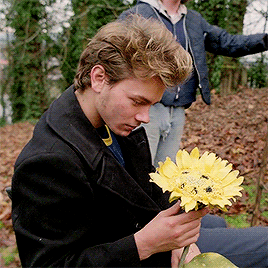
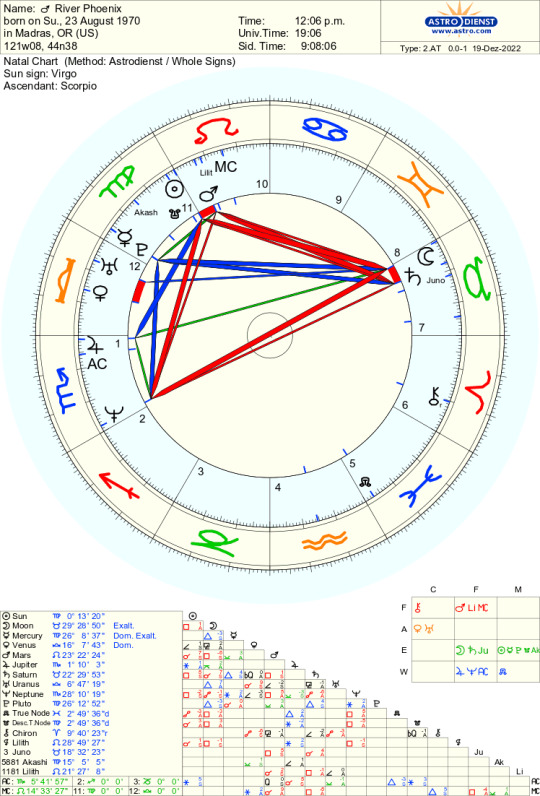
RIP
My mom was a huge fan so I had the urge to analyze his chart and wow! I’m using whole sign system for his chart
So he’s a Scorpio rising with chart rulers Mars(traditionally) in Leo 10h and Pluto (modem) in Virgo 11h. This screams star power to me! He’s well known for playing emotional in depth characters, I haven’t seen too many of his movies but the campus fire scene from stand by me is iconic.
He also has Jupiter and Neptune in his 1h. I’ve said this in my other post but celebrities who has Jupiter 1h are seen as larger than life and people are crazy about you! With Neptune 1h, people create these fantasies of who you are and not see the real you, they also put you on a high pedestal, you give off “Gods among us energy!” This is exactly what I think was happening to him lol, Harry styles has Jupiter 1h as well with libra moon 12h, I’m seeing the same energy with him a little bit
I added his asteroid Lilith here and I see it conj his Mc and Mars. He may have been seen as a sex icon or lot of people wanted to hook up with him. With mars in his 10h, he put a lot of passion into his career, 10h ruler in the 11h Virgo, and wasn’t he one of the first mainstream celebrities to introduce vegan life style before it became as popular as it is today.
His Taurus moon conj Saturn 7h , he was emotionally mature and stable. He may have had to grow up quickly than other kids with Saturn on his moon. It probably took him awhile to open up emotionally to people. His 4h ruler(moon) is in the 9h. he either came from a immigrant family, they traveled a lot or they were religious or spiritual some way. Aquarius 4h with Saturn Taurus, beautiful family and their probably creative too, well obviously with his brother Joaquin lol
Sun conj South Node 11h Virgo. He came here to be a teacher to the masses because that’s who he’s been for several lifetimes. introducing veganism and healthy life styles and animal cruelty to young people was his mission with 5h Pisces North Node here.
I added Akashic asteroid here, it represents or give us a glimpse of our pass life. It’s also in Virgo 11h so he’s literally came here to finish up what he started in his last life but I believe he wanted to influence his and younger generations . I keep bringing up veganism cause I i think that was the most important to him but acting was his way to get known to spread this message. Mercury conj Pluto really signified this, people listened to what he had to say cause transformative! People looked up to him, he probably had monk, and guru vibes.
His legacy. 4h and 9h, 10h rules over legacies. 4h Aquarius with Taurus moon conj Saturn 7h, his family will keep his legacy alive. 9h cancer; again his family, also he’ll be remembered as a sweet loving guy who cares about people. 10h Leo conj Mars, his looks will be remembered as well, his beauty which is superficial to me but that’s what people will think about at first
I also wanted to add his 3h for his legacy, he has Capricorn 3h, his little brother Joaquin is one of the biggest actors of his generation right now, Joaquin is a Scorpio sun so he’s finishing what his brother started especially with the veganism movement
Overall River was a great actor and activist, gone too soon but may his art live forever💙

#astrology community#knowledge#astrology#love astrology#celebritybirthchart#river phoenix#birth chart#natal chart
27 notes
·
View notes
Text
WHERE IN THE WORLD IS ERIS EVANS?

[A fallen Commander given a second chance by on of the most powerful megacorps in the Pokemon world, Eris Evans's goals remain unchanged wherever she goes (for now): aggressively expand the influence of the DEVON CORPORATION and its tech...and experiment on anything/anyone interesting along the way. For fun. 😇]
[ooc: I'm hoping that this little rundown can serve as a leap-off point for interactions! There's no set 'timeline' or anything, but maybe seeing Eris's exploits can spark some ideas for a run-in with your muse! I am always game to start something!]
KANTO: Currently putting the finishing touches on a business partnership between Devon and SILPH, while also recruiting help to learn more about the region. Occasionally visits the region to attend Silph's cutting-edge scientific discovery conferences. Most recently captured by TEAM ROCKET.
JOHTO: Hasn't visited Johto often because she has little reason to--the region's traditionalism is somehow even worse than Sinnoh's. However, she has recently started attempting to sink Devon's claws into Johto's valuable resources--despite its stubborn reliance on the past, the region has potential...
HOENN: The current home base and where she (and Devon) wield the most influence. Spokesperson for INFINITY ENERGY by day, mad scientist perfecting her ABSORBER TECHNOLOGY by night.
SINNOH: Left behind Galactic's legacy after tormenting the region as COMMANDER JUPITER. Still has a vested (vengeful) interest in promoting Devon's tech and influence here, laughing in the face of the higher-ups who tried to exile her from Sinnohan shores.
UNOVA: Can often be found here attending business conferences as a representative for Devon, but still has time for a little fieldwork. Had a bad experience riding the Battle Subway. Recently stumbled into a mysterious laboratory and potential alliance...
KALOS: Currently making connections with the powerful organizations here for Devon's sake, touting the Corporation's messages and tech to good results. Intrigued by the ULTIMATE WEAPON (the Absorber is basically a miniaturized version of the original machine) and the potential outcomes of combining MEGA EVOLUTION with Infinity Energy.
ALOLA: Originally sent here on a 'mandatory vacation' from Devon. Has devoted her time to 'personal projects/experiments,' such as developing new toxic compounds from the region's native Pokemon. Landed in Alolan jail for an evening after being caught running tests on endangered Corsola.
GALAR: Sees great value in the resources provided by the untapped WILD AREA. Has had difficulty establishing Devon's hold on the region (thanks to some pushback from its icons), resulting in her setting fire to the Dappled Grove in a rare release of frustration...
PALDEA: Recently arrived here after learning about the TERASTAL PHENOMENON. Curious about said phenomenon's interaction with her Absorber technology. Can usually be found in the Academy's library doing research, though she is keeping a low profile upon infiltrating AREA ZERO.
ORRE: Originally ventured out here in secret to find a cure for her Golbat, but made an interesting connection along the way. She was also able to capture a target possessing intriguing technology (which she must have for Devon's use.)
HISUI: In another life, in another time, Eris Evans is an infamous shakedown artist named CERES EVERGREEN.
#RECONSTRUCTION. (hcs)#(this is a helpful resource for potentially new interactions but i am always down to just wing stuff as well!! come here!!)#(this was also REALLY fun to put together...great writing memories!!)#(tysm to everyone who has helped me develop this muse over the years...looking forward to more down the road!!)
17 notes
·
View notes
Text
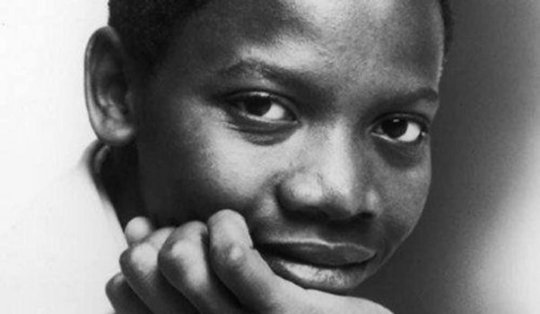
Ronald Dyson (June 5, 1950 – November 10, 1990) was an American soul and R&B singer and actor.
Early career
Born in Washington, D.C., Dyson grew up in Brooklyn, New York where he sang in church choirs. At just 18 years of age, he won a lead role in the Broadway production of Hair, debuting in New York in 1968. Dyson became an iconic voice of the 1960s with the lead vocal in the show's anthem of the hippie era, "Aquarius". It is Dyson's voice leading off the song and opening the show with the famous lyric "When the Moon is in the seventh house, and Jupiter aligns with Mars..." He made a cameo appearance in the 1979 motion picture version of "Hair", singing "3-5-0-0" with another "Hair" alumnus, Melba Moore.
Later career
Dyson also appeared in the 1969 film Putney Swope.
After Hair, Dyson pursued his stage career with a role in Salvation in 1970. His recording of a song from the Salvation score, "(If You Let Me Make Love to You Then) Why Can't I Touch You?", successfully launched his record career, breaking into the Top 10 of the US Billboard Hot 100 record chart, peaking at number eight in 1970. The follow-up, "I Don't Wanna Cry", was a strong US R&B seller, climbing to number nine.
In 1971, "When You Get Right Down To It", of which his was a more dramatic cover version of a song that had been a hit the previous year for the Delfonics, made the US charts, and reached number 34 on the UK Singles Chart in December that year.
His record company, Columbia Records, sent him to Philadelphia in 1973 to be produced by Thom Bell, one of the premier producers of the day, for several tracks. Bell's highly orchestrated style suited Dyson with hits including "One Man Band (Plays All Alone)", which reached number 28 on the Hot 100 and number 15 on the R&B chart, and "Just Don't Want to Be Lonely" peaking at number 60 on the Hot 100 and number 29 on the R&B chart. These appeared on an album which was also made up of re-mixes of some earlier recordings, including "When You Get Right Down To It".
Dyson remained with Columbia working with top-line producers for another three albums, The More You Do It (1976), Love in All Flavors (1977) and If The Shoe Fits (1979). The title track of the first of the three resulted in one of the singer's biggest-selling records, reaching number six on the R&B chart. It was produced by Charles "Chuck" Jackson (half brother of Jesse Jackson and no relation to the more famous singer of the same name who recorded for the same company in the 1960s) and Marvin Yancy, who had been responsible for successfully launching the career of Natalie Cole with a series of hits. (Jackson and Yancy had also produced hits for a Chicago soul group, The Independents, with whom Jackson was also lead singer.)
In 1986, Dyson also provided the vocals for the song "Nola" on the She's Gotta Have It soundtrack.
Dyson then moved to an Atlantic Records subsidiary label, the Cotillion Records label, in 1981 for two albums and several singles which were only moderately successful. His acting and singing career had begun to stall in the late 1970s due to ill health, and it was in 1983 that Dyson appeared on the R&B chart for the last time on Cotillion with "All Over Your Face". His final solo recording was "See The Clown" in 1990.
Death
Dyson died at the age of 40 from heart failure on November 10, 1990, in Brooklyn, New York.
Legacy
A posthumous release on Society Hill Records appeared in 1991, when a duet with Vicki Austin, "Are We So Far Apart (We Can't Talk Anymore)", dented the US R&B chart, reaching number 79 during a five-week run.
34 notes
·
View notes
Text
I feel like I’ve made this post before but I will make it again: I fucking LOVE scifi fashion, especially OLD scifi fashion.
I definitely love old B-movie and pulp-style “future fashion” the MOST, obviously, because I am just Delighted by visions of the future that are “contemporary fashion with garbage glued onto it,” but even higher budget movies can be so incredible when they allow themselves to have fun.
The challenge in trying to emulate the feel of “old scifi” as a design direction is that there are so many flavors of scifi, and each one landed on what is now considered Iconic because that’s what they had the budget for.
Some of the most iconic outfits of the broad genre are literally space crew uniforms, with utilitarian designs suitable for mass production and for visual clarity. These are usually inspired somewhat by irl military uniform design, and utilize color blocking and clean lines. This shares DNA with a lot of the design direction for anime and animated series in the genre, which benefit from simpler outfits and designated character colors. These all aim for being evocative- quite literally, Iconic- and succeed so well that they become can shorthand for the genre as a whole.
Similar in aesthetics is pulp pinup scifi, which falls between Iconic Designs and “10 minutes into the future bullshit fashion.” A lot of the time it’ll just be space bikinis, (or more accurately, space crop tops+sexy cutouts) but sometimes, like with Barbarella, you’ll get multiple outfits that are basically go go dancer outfits/fetish wear with chain mail/armor thrown on top, which is a very classic pulp look.
Then you’ve got my favorite, which is “10 minutes into the future bullshit fashion,” a prime example of which is in Back to the Future 2, where wearing your clothes inside out is trendy because you can see the designer labels (which, frankly, is brilliant commentary on Brand Fashion of the day, and also justifies the BS of “why are most of them wearing normal clothes”), and the rest of the future fashion is just “junk glued onto normal clothes, weird layering of statement pieces, stuff made from novelty fabrics, and sometimes someone will look like a space marine cyborg for no reason.” It’s a ton of garbage thrown together, and it rules because it reminds me of irl street fashion the most.
Space fantasy/space opera, on the other hand, tends to lean into extravagance, taking cues and employing silhouettes and concepts from haute couture and runway fashion. (Think Star Wars Prequels, Jupiter Ascending, and frankly, a lot of of the Miss Universe National outfits)
(Sidebar: This, in my opinion, is what most clearly differentiates the visual development of the original Star Wars trilogy from the prequels, beyond just the use of CGI; A New Hope HEAVILY took inspiration from westerns (black hats and white hats, Han Solo’s vest, etc), whereas the prequels and Padme’s regalia was all EXTREMELY space opera.)
The most boring versions of future fashion to me (which is, unfortunately, where Hollywood has seemingly landed on as “this is is what the future looks like,”) is “Bladerunner-Style Punkless Cyberpunk” (neon orientalism and trench coats) and “Apple Store Chic” (all white/black, smooth, minimalist, sometimes with Tron Lines if they’re feeling spicy)
I’m not saying it can’t be done WELL (Tron Legacy had a lot of fun sharp silhouettes and color coding to add interest to the Apple Store aesthetics), I’m just saying that it’s less fun than a guy wearing a 10 gallon hat with a headlamp glued to the front.
Anyway, TL;DR, please make the future weird again. I think the TikTok girlies gluing plastic fish to their outfits are the first step to a new and hopeful future.
2 notes
·
View notes
Photo
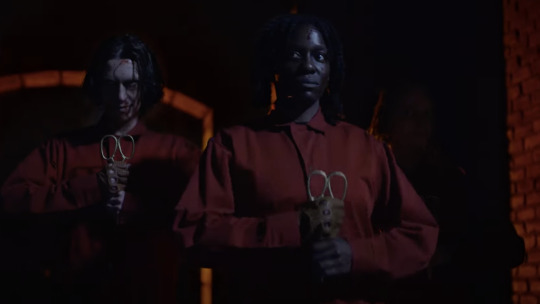
Jordan Peele’s Nope, Us Crossover at Universal Halloween Event
Screenshot : Universal Studios Hollywood
To this we say—YES. Jordan Peele’s recent horror hit Nope and his 2019 chiller Us will cross over as portion of Universal Studios’ seasonal Halloween Horror Nights “Terror Tram” attraction in Hollywood, CA.
Sounds like Common is extra than on the lookout ahead to scaring the trousers off its guests, according to a push release: “The ‘Terror Tram’ is exceptional to Common Studios Hollywood, inviting guests to explore by foot parts of the well known film studio backlot, household to some of the most notorious movie sets. After company disembark the Tram, the terror is unleashed. This yr, the villainous Hollywood Harry unravels ‘Hollywood Harry’s Halloween,’ a nightmarish spectacle with a demented forged of people that winds past the iconic Psycho House then by means of Steven Spielberg’s War of the Worlds set. As company make their way through a choreographed massacre at the Jupiter’s Assert established from Nope , they will come across the Tethered from Us in a horrifying finale of epic proportions.”
This seems solely fantastic (study all about io9’s check out to the Jupiter’s Declare established right here ), but we do have a person small gripe: where’s Candyman ?! The Nia DaCosta film, generated by Peele, introduced us a brooding and unsettling re-imagining of the legend and we’d truly love to see him lurking about way too. Probably if we say his title five occasions…
Even with no Candyman, there are lots much more frights awaiting, however. The cinematic thrills will also incorporate “The Horrors of Blumhouse,” which will characteristic the creepy baddies from The Black Cellphone and Freaky. There’s also the triumphant return of the Killer Klowns from Outer Area huge top—er, residence, crammed with zany-zapping and cotton-cocoon taking in alien Klowns (ayyy, Shorty!). Just in time for Halloween Kills is an up-to-date variation of HHN’s house for John Carpenter’s Halloween ‘78. And eventually, the West Coast’s get on “Universal Monsters: Legends Collide” will phase a struggle for a coveted cursed amulet involving the Wolfman, Dracula, and the Mummy. (There’s a prequel household of sorts at the Halloween Horror Nights Orlando that serves as a unfastened origin for the story—but you do not have to go to both of those to observe along.)
Universal Studios Hollywood’s Terror Tram
Listed here are some temporary descriptions of the comprehensive household slate from the Common push release, which incorporate specifics on a few unique houses for this year’s party:
The Weeknd: Right after Hours Nightmare Requires visitors into the twisted head of multi award-successful artist the Weeknd as they stage into a surreal dwelling nightmare stuffed with grotesque figures and themes motivated by his audio and brief movies.
G/O Media may perhaps get a fee
Back to School
Back to School Month with Govee Sale
Decorate your dorm You may not be allowed to paint your dorm room walls when you get back to school, but no one can stop you from painting them with light! Govee has a ton of different RGB smart lights on sale just for the occasion as the first week of school approaches.
Halloween Ventures back to where it all began in an eerily authentic haunted house that depicts the most chilling moments from the critically-acclaimed original film.
The Horrors of Blumhouse Brings to life Blumhouse’s supernatural thriller The Black Phone and horror-comedy Freaky .
Universal Monsters: Legends Collide Expands on the thrilling legacy from Universal Pictures as notorious horror icons the Wolf Man, Dracula, and the Mummy come together for the first time ever in an epic battle.
Killer Klowns from Outer Space Traps guests in a frightening funhouse of murderous clown-like creatures.
La Llorona: The Weeping Woman Features the legend of La Llorona who comes to life to terrorize the living as she mourns the children she murdered.
Scarecrow: The Reaping Finds that Mother Nature’s retribution against the homesteaders for their sins of the past will be carried out by the farmland’s scarecrows who have remained mute witnesses—and are now guardians of destruction for anyone who crosses their path.
Universal Horror Hotel Lives ups to its reputation as the original owner, who was executed years ago for his dastardly deeds, continues to haunt the place today—and guests must escape his vengeful spirit or risk becoming a permanent resident.
There’s also all-new scare zones, as per the release :
El Pueblo del Terror An extension of “La Llorona: The Weeping Woman.” The horror continues once guests exit the haunted house and discover there is no escaping the frightening legend along with other supernatural characters from Latin America’s most frightening myths.
Sideshow Slaughterhouse Turns New York Street into a battle zone as the performers and workers from a seedy carnival sideshow are on a murderous rampage.
Clownsawz Features a demonic troop of clowns who band together to terrorize guests with chainsaws as they enter the park.
Image : Universal Studios Hollywood
Halloween Horror Nights 2022 starts Thursday, September 8 at Universal Studios Hollywood and will run find evenings as a result of Monday, October 31. For additional information and tickets, take a look at www.HalloweenHorrorNights.com .
Want extra io9 information? Examine out when to expect the most current Marvel and Star Wars releases, what is future for the DC Universe on film and Television , and all the things you need to have to know about Home of the Dragon and Lord of the Rings: The Rings of Energy .
https://socialwicked.com/jordan-peeles-nope-us-crossover-at-universal-halloween-event/
3 notes
·
View notes
Text

BATMAN: THE LONG HALLOWEEN – DELUXE EDITION
THE COMPLETE THRILLER, WITH ADDED MATURE CONTENT, AVAILABLE FOR THE FIRST TIME ON 4K ULTRA HD STARTING 9/20/22
No tricks, just treats for Dark Knight fans as Batman: The Long Halloween – Deluxe Edition – the complete mystery with added mature content – comes to 4K for the first time ever. The R-rated, feature-length animated film will be available on 4K Ultra HD Blu-ray Combo Pack (USA $34.99 SRP) for the first time ever, as well as on Blu-ray+Digital (USA $24.99 SRP), Blu-ray (only available in Canada, $29.99 SRP) and Digital starting September 20, 2022.
Produced by Warner Bros. Animation, DC and Warner Bros. Home Entertainment, and inspired by the iconic mid-1990s DC story from Jeph Loeb and the late Tim Sale, Batman: The Long Halloween – Deluxe Edition begins as atrocious serial killings on holidays in Gotham City send The World’s Greatest Detective into action – confronting both organized crime and a unified front of classic DC Super-Villains – while attempting to stop the mysterious murderer. Batman: The Long Halloween was originally released as a two-part film, and both films still stand at 100% fresh on Rotten Tomatoes.
Jensen Ackles (Supernatural, The Boys, Batman: Under the Red Hood) leads a star-studded Batman: The Long Halloween – Deluxe Edition cast as the voice of Batman/Bruce Wayne alongside the late Naya Rivera (Glee) as Catwoman/Selina Kyle, Josh Duhamel (Transformers, Jupiter’s Legacy) as Harvey Dent/Two-Face, Billy Burke (Twilight, Revolution, Zoo) as Commissioner James Gordon, Katee Sackhoff (The Mandalorian, Battlestar Galactica, Batman: Year One) as Poison Ivy, Titus Welliver (Bosch, Bosch: Legacy, Deadwood) as Carmine Falcone, Julie Nathanson (Call of Duty: Black Ops Cold War, Suicide Squad: Hell To Pay) as Gilda Dent, David Dastmalchian (The Suicide Squad, Dune, Ant-Man) as Calendar Man & The Penguin, Troy Baker (The Last of Us, Young Justice) as The Joker, Amy Landecker (Your Honor, Transparent) as Barbara Gordon & Carla Vitti, Jack Quaid (The Boys, Star Trek: Lower Decks, Oppenheimer) as Alberto, Fred Tatasciore (American Dad!, Family Guy) as Solomon Grundy, Alyssa Diaz (The Rookie, Ray Donovan) as Renee Montoya, and Alastair Duncan (The Batman, Batman Unlimited franchise) as Alfred. In addition, Robin Atkin Downes (The Strain, Constantine: City of Demons) voices both Scarecrow & Thomas Wayne, John DiMaggio (Futurama, Disenchantment) is the Mad Hatter, Laila Berzins (Genshin Impact) is Sofia Falcone, Jim Pirri (World of Warcraft franchise) is Sal Maroni, and Zach Callison (The Goldbergs, Steven Universe) is Young Bruce Wayne. Additional voice work was provided by Gary LeRoi Gray, Rick Wasserman, Frances Callier and Greg Chun.
Chris Palmer (Superman: Man of Tomorrow) directs Batman: The Long Halloween – Deluxe Edition from a screenplay by Tim Sheridan (Reign of the Supermen). Producers are Jim Krieg (Batman: Gotham by Gaslight) and Kimberly S. Moreau (Batman vs. Teenage Mutant Ninja Turtles). Butch Lukic (Justice Society: World War II, Superman: Man of Tomorrow) is Supervising Producer. Executive Producer is Michael Uslan. Sam Register is Executive Producer.
Special Features:
- BATMAN: THE LONG HALLOWEEN – EVOLUTION OF EVIL (New Featurette) – The mystery surrounding the Holiday Killer shrouds Gotham in a sinister darkness forcing Batman to stop the villain's assault on the city. This is a comprehensive look at The Long Halloween with original writer, Jeph Loeb, and filmmakers.
5 notes
·
View notes
Text
Veer Vishwa Thane by VB Group: Elevating Your Living Experience

In the dynamic landscape of real estate, VB Group Properties stands out as a beacon of excellence. With a commitment to delivering unparalleled living experiences, VB Group introduces Veer Vishwa Naupada Thane, a testament to luxury, comfort, and modernity. Nestled in the heart of Thane, this residential complex redefines urban living.
Overview of VB Group Properties
VB Group Properties has established itself as a prominent player in the real estate sector. With a legacy of crafting iconic landmarks, they have earned the trust and admiration of discerning homebuyers. Their projects are synonymous with quality, innovation, and customer satisfaction.
Features and Amenities
Veer Vishwa Naupada Thane offers an array of meticulously designed residences, ranging from cozy 1 BHK apartments to spacious 3 BHK homes. Each unit is thoughtfully planned to maximize space utilization and enhance comfort.
24X7 Water Supply
Children’s Play Area
Energy management
Rain Water Harvesting
Power Backup
Storm Water Drains
Community Buildings
Recreation Facilities
Security Features
Types of Flats Available
Configuration:
1BHK – 483.00 sq.ft
2BHK – 622.00 sq.ft
3BHK – 767.00 sq.ft
1 BHK Flats
Ideal for young professionals and small families, the 1 BHK flats in Thane offer a perfect blend of comfort and affordability. Thoughtfully designed layouts and modern amenities make them an attractive choice for homeowners looking for compact yet stylish living spaces.
2 BHK Flats
The 2 BHK flats at Veer Vishwa Naupada Thane are designed to accommodate the needs of growing families. Spacious interiors, well-appointed kitchens, and ample natural light create an ambiance of warmth and tranquility, making it a haven for urban dwellers.
3 BHK Flats
For those seeking ultimate luxury and space, the 3 BHK flats at Veer Vishwa Naupada Thane are the epitome of sophistication. With expansive living areas, designer bathrooms, and panoramic views of the city skyline, these residences redefine opulent living.
Quality Construction and Design
VB Group Properties is renowned for its commitment to quality and excellence. Every aspect of Veer Vishwa Properties in Thane, from construction to design, reflects their unwavering dedication to craftsmanship and attention to detail.
Prime Location and Connectivity
The strategic location of Veer Vishwa Naupada Thane ensures seamless connectivity to major transportation hubs, educational institutions, healthcare facilities, and entertainment zones.
Connectivity:-
Narayana E Techno School – 300 m
Jupiter Hospital Thane – 1.6 km
Tatvagyan Vidyapeeth – 200 m
Kapurbawdi – 400 m
Grand Thali Restaurant – 4.5 km
R Mall Thane-800 m
Highland Park – 400 m
For more details visit our website :- https://www.propmart.co/city/properties-in-thane/
0 notes
Text
Classical & Soul: Baltimore Symphony Orchestra Presents Two Riveting and Diverse Concerts in North Bethesda, MD

The Jupiter Symphony
The Jupiter Symphony, also known as Symphony No. 41 in C major, K. 551, stands as one of Wolfgang Amadeus Mozart's crowning achievements in symphonic composition. Completed in 1788, it marked the culmination of his symphonic works and remains an exemplary piece within the classical repertoire.
Comprising four movements, the symphony showcases Mozart's mastery of orchestration, thematic development, and harmonic complexity. The opening movement, marked by its grandeur and exuberance, introduces a majestic theme that undergoes intricate transformations throughout the piece. The slow second movement exudes a serene and contemplative mood, contrasted by the spirited, dance-like character of the third movement.
However, it's the final movement that earned the symphony its nickname "Jupiter." This vibrant finale is a testament to Mozart's brilliance, intertwining five distinct themes in a polyphonic marvel, displaying an unprecedented level of contrapuntal skill. The music's cascading melodies, dazzling rhythms, and kaleidoscopic interplay of instruments create an awe-inspiring musical tapestry.
Mozart's Jupiter Symphony continues to captivate audiences and musicians alike with its complexity, innovation, and sheer beauty. Its profound impact on classical music endures, serving as a testament to Mozart's unparalleled genius and his lasting legacy in the annals of musical history.
Grab your concert tickets and head over to The Music Center at Strathmore to watch this symphony being performed live by the Baltimore Symphony Orchestra headed by conductor James Conlon. Other pieces being performed include Mozart’s Symphony No. 25 and Piano Concerto No. 23. The performance of Mozart Jupiter Symphony North Bethesda Maryland will take place on January 07, 2024 at 3p.
Capathia Jenkins & She’s Got Soul
Capathia Jenkins, an acclaimed singer and actress, possesses a vocal prowess that transcends genres, captivating audiences worldwide. Her performances intertwine elements of soul, jazz, and Broadway with an electrifying stage presence that makes every show an unforgettable experience.
Jenkins' artistry shines through her versatility, seamlessly transitioning from show-stopping Broadway tunes to emotionally charged jazz standards. Renowned for her magnetic stage charisma, she draws listeners into her world, evoking profound emotions through her soaring vocals and heartfelt interpretations. With each note, she weaves a musical narrative that resonates deeply with her audience.
She's Got Soul tour is a riveting showcase of R&B's most iconic hits, brought to life by the sensational Capathia Jenkins and a talented ensemble. With her powerhouse vocals and magnetic stage presence, Jenkins delivers a soulful journey through the genre's timeless classics. From the stirring melodies of Adele to the soulful rhythms of Stevie Wonder, the repertoire spans a spectrum of R&B legends. Guided by the dynamic conductor Lucas Waldin, this electrifying musical experience promises to captivate audiences with its vibrant energy, emotive storytelling, and a celebration of the rich legacy of soul music.
You can catch this program at the Music Center at Strathmore on January 11, 2024 at 8:00p.
Author Name
Barkat Dhanji
0 notes
Text




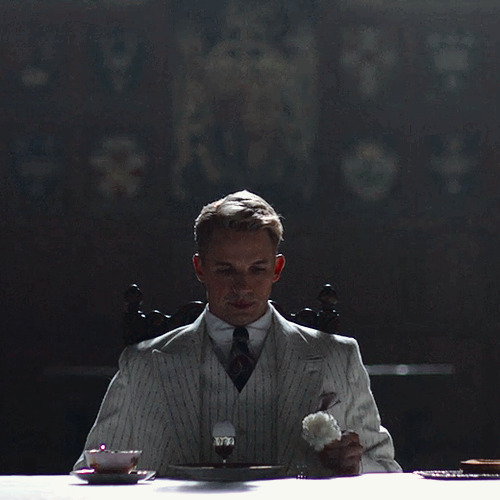


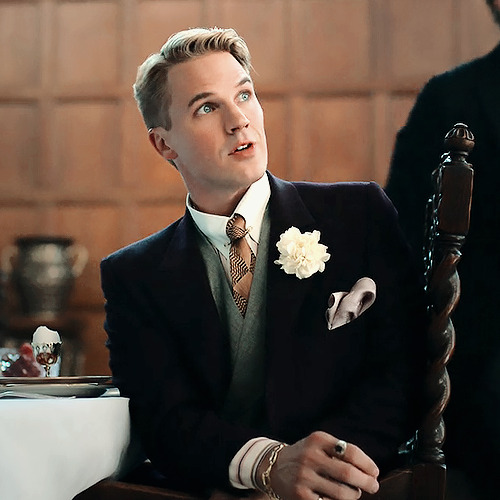

george hutchence icons
like/reblog if you save
credit gagalacrax on twitter if you use
give credits if you repost, please
follow us for more
#icons#george hutchence#george hutchence icons#icons george hutchence#jupiters legacy#jupiters legacy icons#icons jupiters legacy#skyfox#skyfox icons#matt lanter#matt lanter icons#icons matt lanter#attack of the clones#prequels#jupiter's legacy icons#tv icons#jupiter's legacy#jupiter legacy#star wars#sw
214 notes
·
View notes
Photo



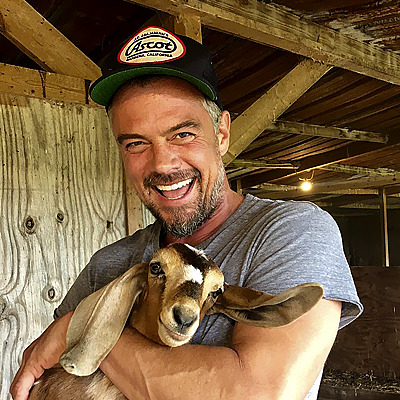

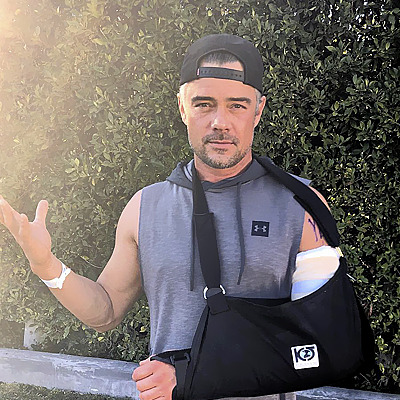



#josh duhamel#josh duhamel icons#icons#jupiter's legacy#jupiter's legacy icons#jupiters legacy#jupiters legacy icons#icons josh duhamel#actor#actors icons#male icons#boys icons#icon#josh duhamel icon
50 notes
·
View notes
Text
elena kampouris icons.




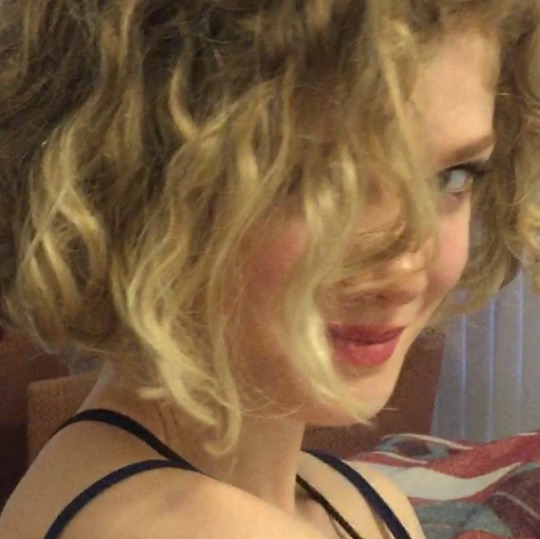




please, like and reblog if you save.
#elena kampouris#elena kampouris icons#icons elena kampouris#elena kampouris packs#elena kampouris layouts#jupiter's legacy layouts#icons jupiter's legacy#jupiter's legacy icons#jupiterslegacy#icons#girls icons#random icons#girls#icon#psd#random#random girls#icons without psd#site model#chloe sampson#chloe sampson icons#chloe sampson packs#site model icons#site model with psd#random icon#random girls icons#site model without psd#icons site model#site model girls#site model layouts
32 notes
·
View notes
Text
What if we never left the island?
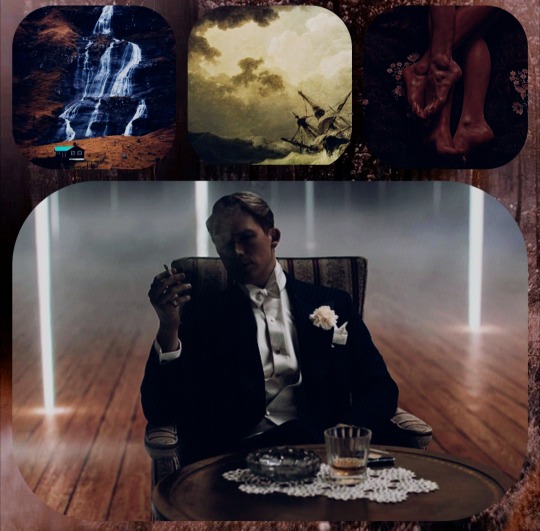
Looking for a possible RP using his character
#roleplay#dark asthetic#jupiters legacy icons#jupiter legacy#jupiters legacy#jupiter's legacy#jupiter's legacy icons#icons george hutchence#george hutchence#skyfox icons#skyfox
4 notes
·
View notes








